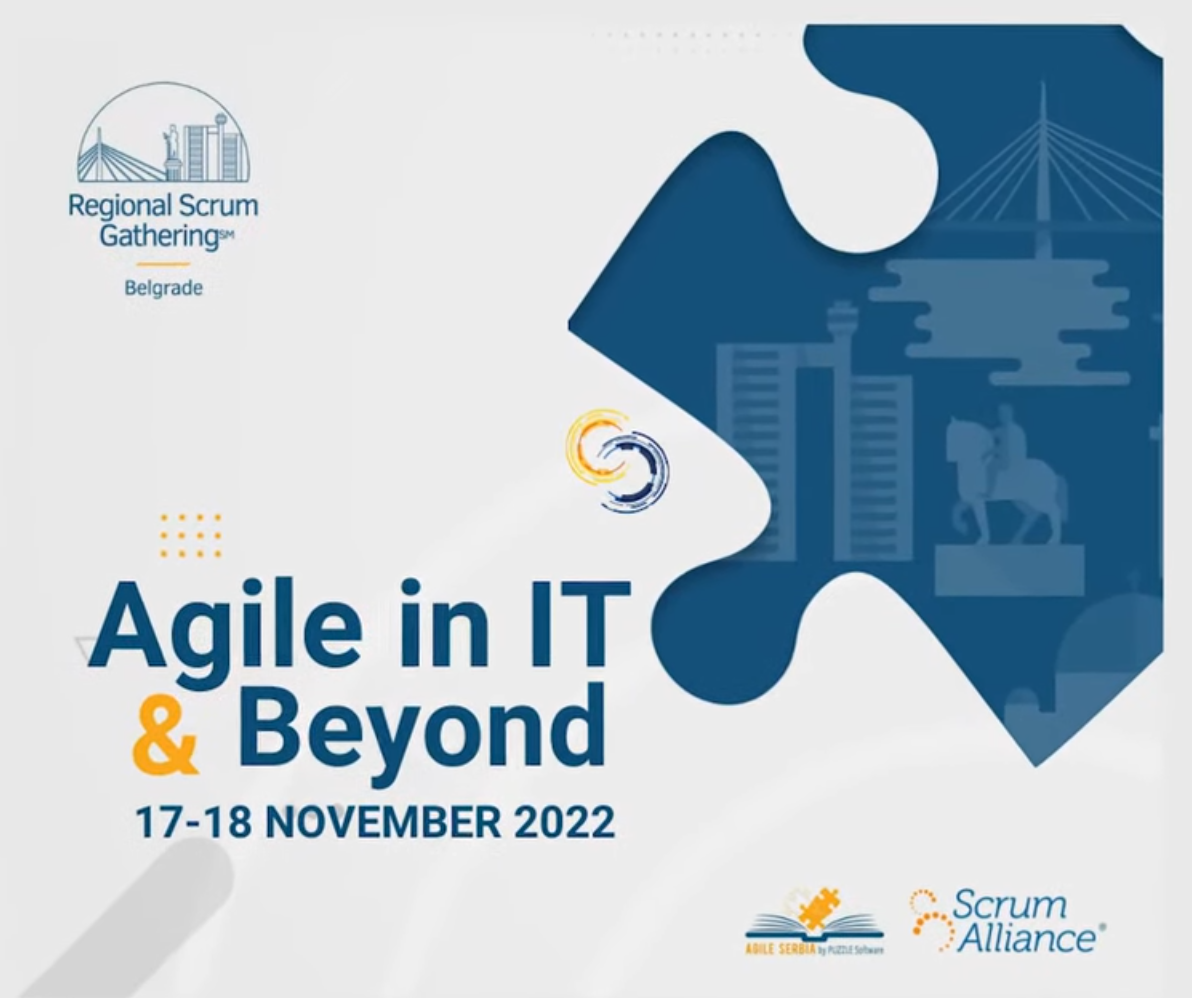SCRUM Gathering Balkans 2023 - Day 2
Today, on my second attending of the SCRUM Gathering Balkans 2023, I decided to attend a presentation on the values of SCRUM within a company.
Leading a Company with SCRUM Values
Presented by Simo Vuleta
SCRUM is based on a few core values, and this is how Simo implements and understands them :
Commitment
Commit to your objective, commit to your team, and you will find success.
Focus
If you focus on something, it will happen. If you focus on nothing, nothing will happen. Focus on the positive and not the negative.
Openness
Surround yourself with people who will challenge you and give you feedback. Be open to that feedback and use it to improve. In a meeting, be the last one to speak, let others speak and give their opinion first.
Respect
Respect other peoples input, a junior may come and give a new idea and even if it is wrong give him constructive feedback.
Courage
Keeping your head down and going without thinking into a project, promising results at some deadline and not adapting to circumstances is not courage. It is dangerous and can hurt your team and company. Courage is being able to say “okay, circumstances have changed, we need to adapt”.
How to apply quantum computers to real problems
Presented by Stig Elkjær Rasmussen
What is Quantum Mechanics
Computers are getting so small that quantum effects are starting to play a role (2nm). Current can start to “jump” through the walls/barriers of wires and transistors. Quantum mechanics rule the behaviour of very small particles. The quantum realm starts at below 10nm.
In the quantum atomic model, electrons are in a cloud around the nucleus where their exact position is not known. We calculate that position using probability where there is a chance of the electron being in a certain position.
How does a Quantum Computer work ?
Classical computers are based on the binary system (1 or 0), but quantum computers are based on another system : Qubits. Qubits can be 1, 0 or both at the same time. This is called superposition. But QBits can be in 2 states until we look at them. WHen we observe them they assume on or the other position. This is called collapse of the wave function.
Similar to logic gates with bits, there are operations that can be done on QBits. some operations “Entangle” multiple qbits together, where the first qbit will affect the second qbit. This is extremely helpful since by measuring a single qbit, we can know the value of the second one without looking at it. This property can be extended to multiple qbits.
How do you build a Quantum Computer ?
There are many ways :
- Superconductors Using inductors, capacitors and Josephson junctions, must be run at -273°C IT is extremely fast and has high fidelity (99.5%), is scalable and uses off the shelf components.
- Photonic circuits (using light) At room temperature, very fast (speed of light), low fidelity (99%), hard to communicate/connect
- Trapped Ion computers (using trapped atoms in a magnetic field) All qbits are connected, but it is very slow compared to superconductors. Fidelity of (99.5%), but are difficult to make
- Topological Quantum Computers (still in research)
- Quantum annealing Lots of qbits (thousands instead of hundreds), not a universal computer, only specific problems/optimisations
- Neutral atom circuits (catching atoms using light) As fast as superconductors, 99.5% fidelity, hard to connect/communicate, highly complex, -273°C
Any of these technologies may be the right one, or it might be another unknown technology.
Qbits are expected to grow exponentially (1000 qbits in 2023, 4000 in 2024)
Not all qbits are equal, most are prone to errors (classical computers : 1 in 10 years, quantum computers : many errors per second) Error correction is a work in progress.
The problem is most computers have enough qbits, but they make too many errors.
What is actually needed for a usable computer :
- 50 qbits
- Connected together (the qbits)
- Little to no noise
How do you use a Quantum Computer ?
The Variational Quantum Eigensolver (VQE) algorithm could be used for chemistry calculations (finding drugs, etc…).
Grover’s Search algorithm is very promising, it could be used to search very large databases. Based on amplitude amplification which could increase speed from x to sqr(x) which is a huge improvement.
Which problems are useful to solve with a Quantum Computer ?
Use cases for quantum computers :
Quantum Chemistry Molecules are by nature quantum mechanical, so a quantum computer could be used to simulate them. Battery development could also be done using a quantum computer. Traditional drug development costs 20% of all R%D income. Current computers are not very precise, so they are not very useful for chemistry simulations. A classical computer would use 10^86 transistors (more atoms than in the observable universe) where a quantum computer would use 286 qbits.
Optimizing ship routes
Optimizing financial products (building portfolio, choosing which stock to buy)
Kvantify company creates software for quantum computers and high performance computers. These high performance computers are a stepping stone for quantum computers.
Conclusion
Quantum computers are not classical cars on steroids. They are like spaceships, they solve different problems and will never replace the classical computers.
Quantum computers will break traditional cryptography, but they also bring new cryptographic solutions, so no “real danger”.
